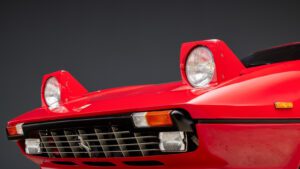2023 Audi RS 3 First Drive Review: To hell with business cases
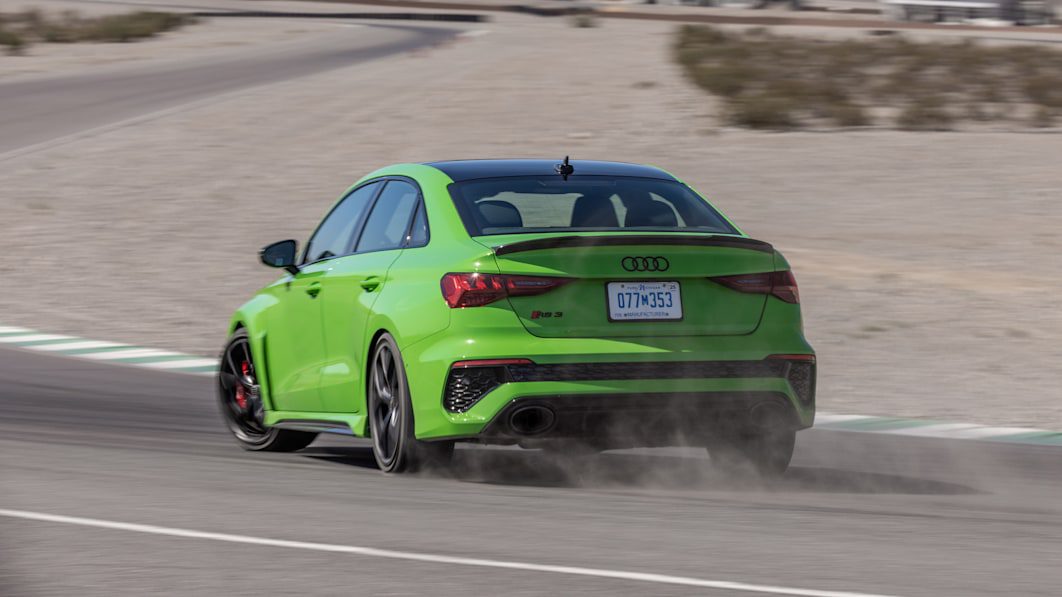
Pahrump, Nev. – The Audi RS 3 is one of those performance models that feels more like a passion project than a calculated business case. Now that the TT-RS has bowed out of the market, Audi’s track-tuned compact sedan is the only car currently sold in North America that’s motivated by a five-cylinder power plant. Given that, it would’ve made sense for the second-generation RS 3 to have transitioned to a hopped up four-cylinder borrowed from the Volkswagen Group parts bin – after all, the S3 already gets its grunt from a 2.0-liter that’s very similar to the Golf R’s. Ratcheting up the potency of a widely used engine for a high-performance application is a common approach in the industry, and that’s ostensibly what Mercedes-AMG did to develop the four pot in the RS 3’s closest rival, the CLA 45.
But Audi has rightfully identified that there’s value in being the oddball, especially when those characteristics connect on an emotional level. The five-cylinder configuration came to epitomize Audi performance during the automaker’s various motorsports efforts throughout the 1980s, and the 1-2-4-5-3 firing order produces an instantly recognizable soundtrack that’s still closely associated with the brand today. The latest iteration of the RS 3’s turbocharged 2.5-liter scores an output bump of 7 horsepower and 15 pound-feet of torque over the outgoing mill for a grand total of 401 hp and 369 lb-ft. The 0-to-60 sprint falls by three tenths to 3.6 seconds. While those are astonishing numbers for a subcompact sedan, they’re hardly transformative. But they’re combined with the engineering work that Audi has done elsewhere in the platform, it results in a highly capable performance machine that surprises on multiple fronts and delivers on the promise of a genuinely unique driving experience.
There’s a new aesthetic to go along with it, too. Functional vents in the flared fenders up front are a subtle homage to the Quattro S1 E2 used in Group B rally racing, while bigger air intakes, a wider front track, and more aggressive aero elements give the new RS 3 a far more purposeful look than its predecessor. Audi also included a small touch that adds to the sense of occasion by way of the Matrix-design LED headlights, which greet you by spelling out R-S-3 each time the car is unlocked.
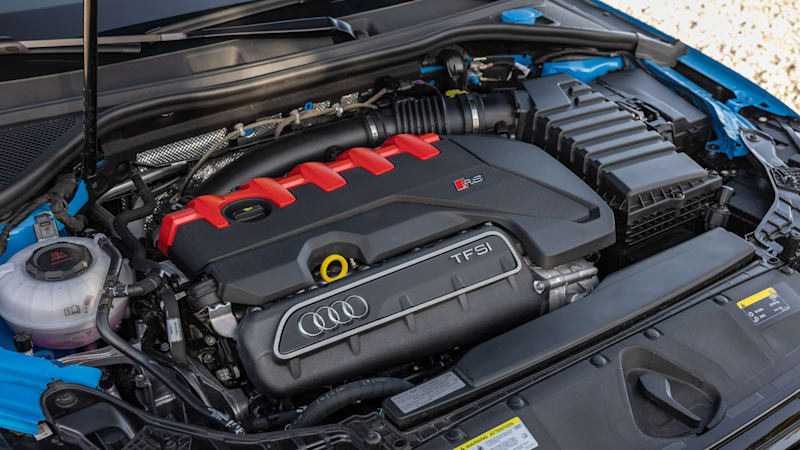
On the chassis front, the new RS 3 boasts bigger brakes with improved heat management thanks to those larger front air intakes and the ability to evacuate hot air through the fender vents. The magnetic dampers equipped on the outgoing RS 3 have been ditched in favor of the adaptive Dynamic Chassis Control setup found on other A3-based models, a move that Audi told us was made to provide a greater range of damping adjustability. There’s also the requisite RS-tuned springs, dampers, and sway bars, along with a ride height that’s 10 mm lower than the S3 and 25 mm or nearly a full inch lower than the A3. The big news, however, is the new RS Torque Splitter: two electronically controlled multi-plate clutches, one for each of the rear-drive shafts, that allows for fully variable torque distribution between the rear wheels.
That in turn has yielded two new drive modes: RS Performance, which is designed to minimize understeer during hard cornering by sending torque to the outside wheel, and RS Torque Rear, which strategically distributes the power between the front wheels and the outside rear wheel to help induce controlled oversteer. Yeah, this one’s got a drift mode.
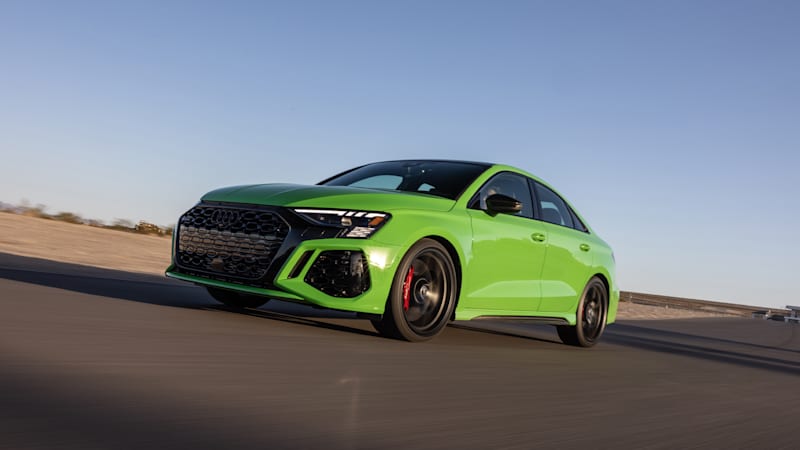
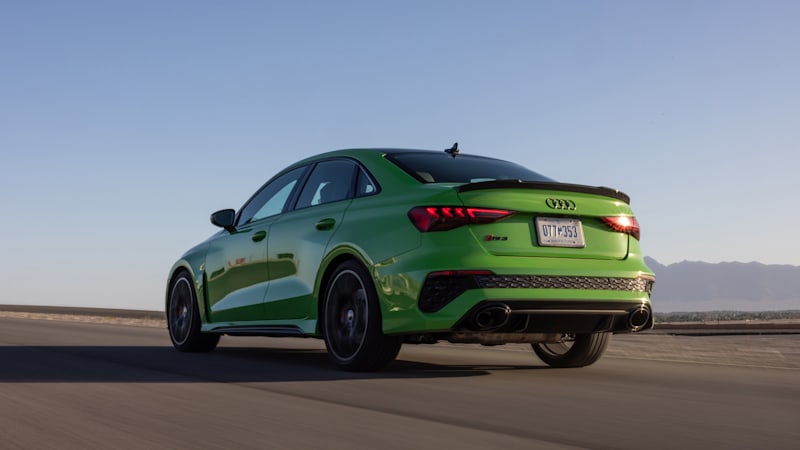
Our first stint behind the wheel of the new RS 3 was on the road course at Spring Mountain Motorsports Ranch, about an hour west of Las Vegas. It’s a demanding circuit with a surprising amount of elevation change, and this particular configuration included a fast sweeper that allowed the RS 3 to put its Torque Splitter tech through its paces. The test cars used for track work were outfitted with the carbon ceramic brakes that come as part of the Dynamic Plus Package as well as the optional, ultra-sticky Pirelli P Zero Trofeo R tires that were used to set the Nürburgring compact production car lap record last summer.
The latter provide a stunning amount of grip; the onboard telemetry registered lateral forces exceeded 1.26G in both braking and cornering on a number of occasions once we got comfortable with the car and the track layout. The RS 3 does a remarkable impression of a rear-drive car in the RS Performance drive mode – understeer was virtually non-existent, only briefly appearing when slow corners were overcooked. That’s just physics. On the few occasions when we came through that sweeper a bit too hot, it was the back end that stepped out first, but it immediately came back in line with zero drama by simply dialing back the throttle. The steering is pretty light regardless of the drive mode that’s set, and there’s not much in the way of useful feedback, but the ratio is quick and it’s accurate enough to place the car right where you want it lap after lap. In that sense it doesn’t really add to the track driving experience, but it also doesn’t take away from it.
The carbon ceramic brakes are less forgivable, though. While they remained fade-free throughout repeated lapping sessions, they offered very little initial bite even when the pads were fresh, and the pedal basically had to be stood upon to get all of the available stopping power from them. Audi’s Pre Sense safety system hated it when that was done and beeped its displeasure each time we went into the braking zone for the track’s big hairpin, but to its credit, it never intervened beyond flashing warning messages on the Virtual Cockpit display.
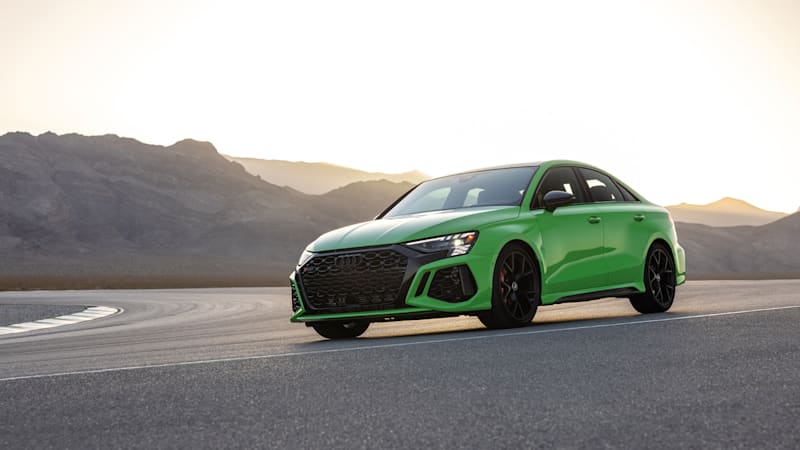
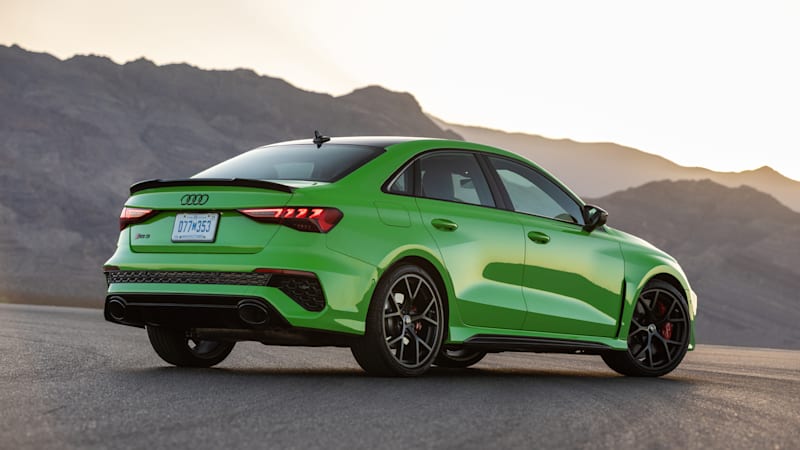
After we’d had our fill of the track we headed out for a two-hour drive through the desert to get a better sense of what the RS 3 is like in everyday use. There’s a bit of turbo lag when accelerating from idle, but there’s no shortage of grunt when the boost comes in. It’s also kind of hard to stay mad at this engine when its exhaust note keeps reminding you of the R8’s naturally aspirated V10 at lower revs.
Audi’s decision to swap out the magnetic dampers for more conventional units came as a bit of a surprise, but out on the road it was hard to argue with the results, as the RS 3 was remarkably compliant on both the sunbaked pavement around town and the undulating stretches of highway near Death Valley Junction. In more spirited sections of the drive, pressing the RS button on the steering wheel switched the car from Comfort to the RS Performance drive mode in order to stiffen the suspension and increase body control as the pace ramped up, but it never felt abusively stiff regardless of how fast or slow we were going. Our test car was outfitted with the RS Technology Package, which includes a nicely balanced Bang & Olufsen audio system and sharp head-up display that are worth springing for.
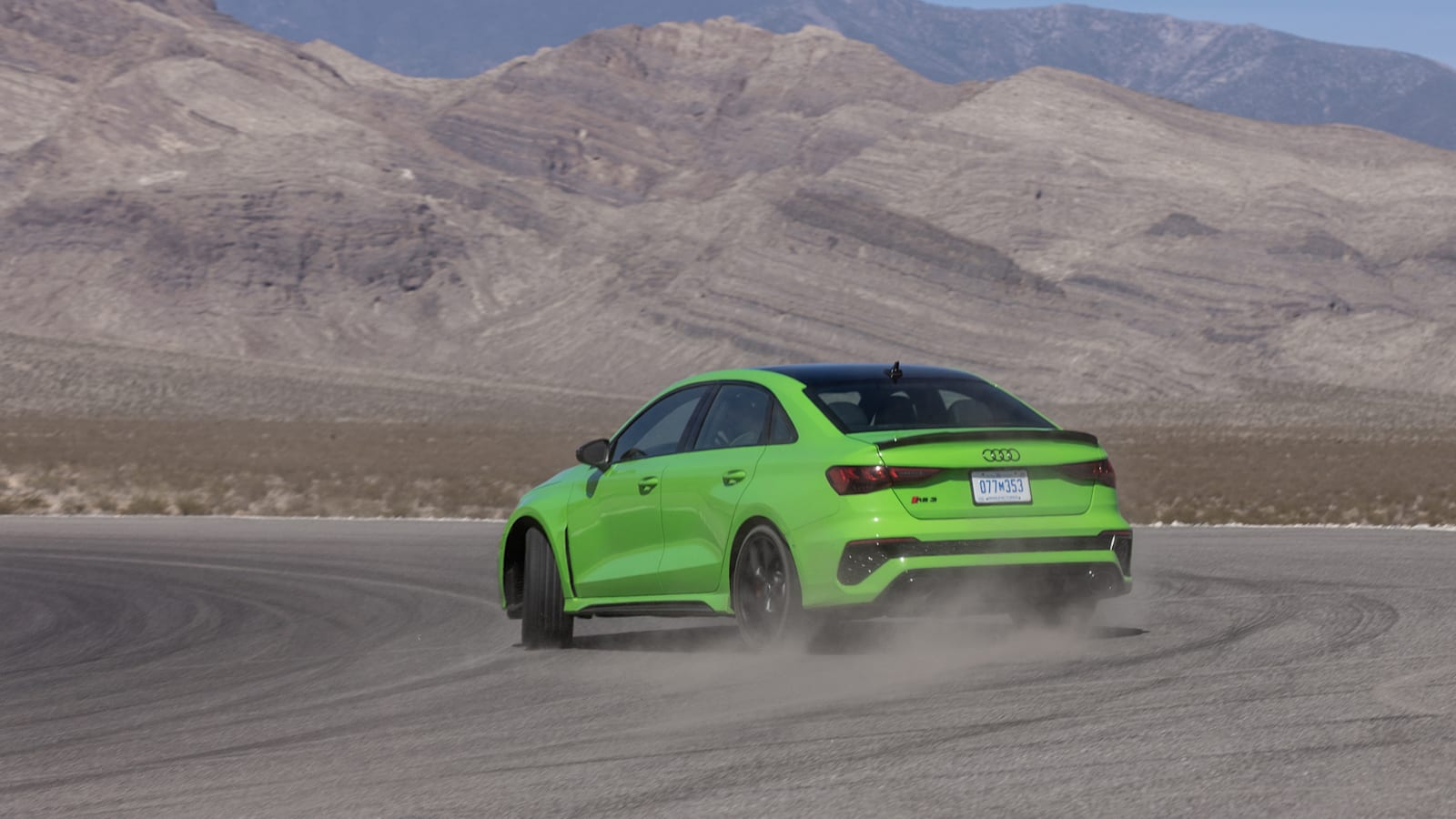
Returning to Spring Mountain, it was time to don helmets once again, this time on a skidpad autocross Audi set up to fully demonstrate the RS Torque Rear drive mode. Anyone who has ever attempted to drift a powerful rear-drive car knows that much of learning process involves terminal understeer or spinning out – or even a combination of the two during the same attempt – but the Torque Splitter system in the RS 3 is a legitimate game changer. Controlled drifts normally require a very measured approach with the throttle, and if you’re reacting to what the car is doing rather than anticipating it, you’ve probably already lost it. Not so with the new RS 3. Turn in, pin the throttle to the floor, dial in some opposite lock, and adjust as necessary along the way. With the system helping to distribute power where it needs to be in order to keep the car power sliding without letting the back end come around completely, it basically feels like a cheat code. It’s also very addictive, so make sure you set aside a tire budget.
You could argue the RS Torque Rear trick serves no practical purpose in much the same way that you could argue that producing a unique five-cylinder engine for a low volume car is unnecessary, and therein lies the brilliance of the RS 3. This is just as much about celebrating heritage and the sheer joy of driving as it is about hitting numbers on the Nordschleife and injecting some personality into your daily commute. When automakers make impassioned decisions like these, we all win.
Related Video:

